TOPIC
Why Mask Fit Testing Needs to Be on Every ISO 14001 Consultant’s Radar
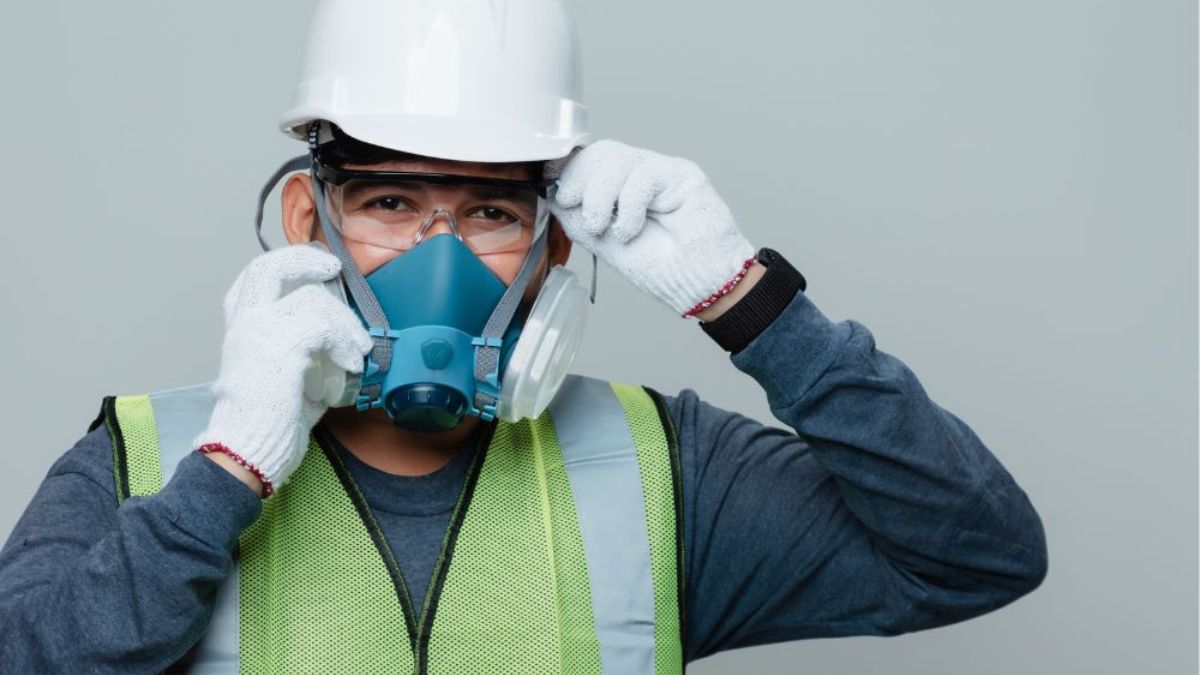
In Australia, mask fit testing has usually been seen in the in the occupational hygiene section or WHS compliance section. It’s a step in the procedure for respirator fit testing. It’s something added to the safety register and is usually done by site managers or health advisors in relation to respirator risk assessments. But that view is quickly becoming outdated.
In light of the increasing concern of airborne pollutants, social accountability, and the health of employees, the work of ISO 14001 consultants is diversifying—so too should the scope of their understanding surrounding mask fit testing be as a multifunctional tool in both environmental and safety performance.
In 2024, the most advance ISO 14001 consultants do not ask whether there is a system in place for respirator protective equipment—what is more important for them is how the fit testing data adds value to the more comprehensive environmental risk assessments.
When personal exposure becomes an indicator of external pollution.
Industries such as waste management, civil construction, resource recovery, and manufacturing, breathing in airborne contaminants such as silica, asbestos fibers and welding fumes and other noxious and harmful materials, do not remain within the confines of the workers breathing zone. They spread across work areas, neighboring buildings, and—if not contained—out into the open environment.
Mask fit testing failures have proven to be as intricate as they are alarming. There are starkly dire consequences to testing failures and an unsolved broken environmental system junction. If employees are not passing fit tests more than they are passing them, or are needing respirators much more than they are supposed to, then these are questions that need to be answered by an ISO 14001 consultant.
Is there sustained reliance on PPE beyond what should be enginnered controls?
Is there coherent measurement and reporting of emissions and particulates suspended in the air within the context of ISO 14001?
Is the environmental aspects register as part of the environmental management system current in relation to the recent changes to processes that affect the quality of air indoors and outdoors?
Ignoring these questions keeps disconnected compliance alive and leaves the company more exposed to regulatory challenges and blows to brand confidence.
Fit Testing as a Mechanism to Prevent Environmental Incidents
Most ISO 14001 risk registers focus on spills, wastewater, unnecessary noise, and the escape of materials. Having an uncontrolled escape of respirators is rarely flagged as an environmental risk. This is a substantial gap.
Consultants and engineers, within audits to the environmental management system (EMS), who assess fit tested samples taken within the documented boundary of local exhaust ventilation, filtration, and room or area ventilation, reveal hidden areas of poor exhaust ventilation. This is a pinpoint area of focus to improve surface air pollution controls.
For instance, if fit tests failures have been consistently recorded among maintenance staff servicing the ducting systems, then the cause could lie within a greater deficiency with how airborne contaminants are trapped or how there is insufficient airflow, rather than solely negligence on compliance on individual level. Aligning Fit Testing with ISO 14001 Clause 6.1.2 (Environmental Aspects) In the, ISO 14001 standard, organizations have a responsibility to outline how the aspects of their operations relate to the environment. The, confines of the interactions are often thought of as simply emissions and waste generation. So, too, is the possibility of internal exposures.
Should a workplace be producing airborne contaminants of a nature and concentration that respirators of a tight-fitting nature become necessary, that should be an identified and assessed environmental aspect. It is then the responsibility of the WHS and hygiene personnel to:
- Evaluate the risk through beyond compliant personal exposure monitoring.
- Capture the actions in integrated safety and environmental plans
- Integrate the outcomes into the manager review and the organization’s objectives.
This interlinking fosters alignment between ISO 14001 and ISO 45001, eliminating redundancy while enhancing control efficiency. Fit Testing Data as a Feedback Loop for Environmental Objectives While compliance with the AS/NZS 1715 and RESP-FIT accreditation remains the domain of safety teams, other personnel have the responsibility to formulate feedback for the environmental objectives based on the ISO 14001 level of compliance.
If a goal focuses on minimizing airborne contaminants, systems which capture the use of high protection respiratory equipment or systems which capture the failure rates of fit tests can be used as clear indicators of progress. This shows the tangible link between an organization’s environmental goals, and on the ground reality of the workers.
Beyond Compliance: a Culture of Shared Air
One of the critically assessed shifts which ISO 14001 consultants can make is to reframe the use of respiratory protection as an issue of social justice. No one should have to hold their breath until they are back behind the fence—or worse, behind the seal of the respirator.
By incorporating the data on tested mask fit into environmental performance assessments, consultants assist organizations in shouldering the social responsibility of not just the emissions that go up, but the emissions that go down to their people to breathe.
This is the only way to use ISO 14001 as a culture-building tool rather than a checklist compliance document. Environmental protection should be all encompassing including the atmosphere within the shed, and not just the shed.
Final Thoughts
Mask fit testing is more than just a tick box during a WHS audit. It is a measure of the level of environmental control in place, and the effectiveness of worker protection. For those Australian organizations which are serious about ISO 14001, it is high time to add this data into the system.
An ISO 14001 consultant fit test shouldn’t be considered an afterthought. It is an indicator of strategy and a blind spot if disregarded.
TOPIC
Elampillai Festivals: Celebrating Tradition and Community
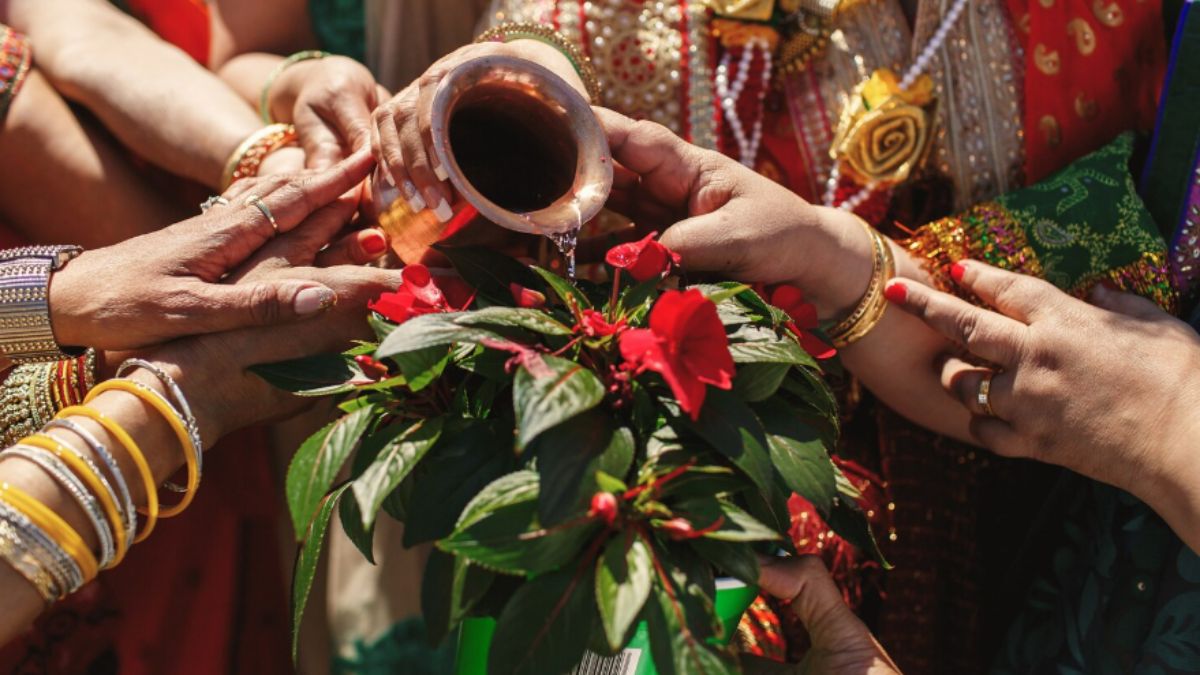
Introduction to Elampillai Festivals
Elampillai, a vibrant town nestled in the heart of Tamil Nadu, bursts with life during its annual festivals. These celebrations are more than just events; they embody the essence of community spirit and rich traditions. Each festival brings together locals and visitors alike, creating an atmosphere filled with joy, color, and cultural pride. From captivating rituals to mouth-watering delicacies, Elampillai’s festivals offer a unique glimpse into the heritage that has shaped this remarkable region for generations. Join us as we explore what makes these festivities so special and how they continue to connect people through shared experiences and cherished customs.
History and Significance of Elampillai
Elampillai, a picturesque town in Tamil Nadu, carries a rich tapestry of history. Its roots stretch back centuries, intertwining with the cultural heritage of the region. The area is known for its significant contributions to art, literature, and spirituality.
Historically, Elampillai served as a vital hub for trade and community gatherings. This prominence allowed diverse traditions to flourish. Festivals emerged as vibrant expressions of local identity.
The significance of these celebrations extends beyond mere festivities. They embody the resilience and unity of the people. Each event tells stories passed down through generations; they connect communities while honoring ancestral customs.
People from surrounding areas often gather during these times, fostering relationships that strengthen social ties. In every aspect—be it food or rituals—the essence of Elampillai’s culture comes alive through its festivals.
Major Festivals and Celebrations
Elampillai is vibrant with a variety of festivals that reflect its rich cultural tapestry. Each celebration brings together the community in joyful harmony.
One of the most notable events is Pongal, a harvest festival celebrated with great enthusiasm. Families prepare special dishes and engage in traditional games, showcasing unity and gratitude for nature’s bounty.
Another significant occasion is Thaipusam. This festival attracts devotees who partake in ceremonial rituals to honor Lord Murugan. It’s a time for reflection and spiritual renewal, drawing visitors from far and wide.
The Aadi Perukku festival marks the monsoon’s arrival. The local rivers come alive as families gather along their banks to offer thanks through prayers and food offerings.
These celebrations are not just events; they weave stories of faith, tradition, and communal bonds that define Elampillai’s identity.
The Cultural Traditions and Customs of the Festivals
Elampillai festivals are a vibrant tapestry of cultural traditions and customs that reflect the community’s rich heritage. Each celebration is marked by unique rituals, showcasing local art forms, music, and dance.
During these festivities, traditional attire takes center stage. Residents often don colorful garments that represent their identity and pride. The streets come alive with folk dances performed to the rhythm of drums and other musical instruments.
Food also plays an essential role in these celebrations. Special dishes prepared for the occasion carry recipes passed down through generations, highlighting the region’s culinary diversity.
Moreover, temple processions are a significant aspect of Elampillai festivals. Devotees gather to pay homage to deities while engaging in spiritual practices that strengthen communal bonds.
The atmosphere buzzes with excitement as locals participate in games and activities rooted in tradition, fostering unity among families and neighbors alike.
Impact on the Local Community
The impact of Elampillai festivals on the local community is profound. These events foster a sense of belonging among residents, drawing people together in celebration and shared joy. The vibrant atmosphere encourages participation across all age groups.
Local businesses thrive during these festivities as visitors flock to the area. Street vendors set up stalls offering traditional foods, while artisans showcase their crafts. This economic boost supports families and strengthens community ties.
Moreover, festivals serve as a platform for cultural exchange. Different generations share stories and practices, ensuring that traditions are passed down. In this way, younger members learn about their heritage in an engaging manner.
Additionally, the festivals often promote social causes or charitable initiatives, uniting everyone under a common goal. Through collective efforts, they inspire positive change within the community itself.
Preserving the Heritage through Festivals
Festivals are more than just celebrations; they embody the essence of a community’s heritage. In Elampillai, each festival is a vibrant tapestry woven with history, beliefs, and customs passed down through generations.
These events serve as living museums where traditions come alive. Elders share stories that breathe life into the past while younger generations learn their cultural significance. This intergenerational exchange fosters pride in one’s roots.
Moreover, local artisans showcase traditional crafts during these festivities. Handcrafted goods tell tales of skill and artistry unique to Elampillai. The marketplace buzzes with activity, creating an atmosphere rich in culture.
As participants engage in rituals and performances rooted in ancient practices, they reinforce their connection to their ancestors. Each dance step or song sung reverberates with meaning that transcends time.
Through festivals, Elampillai not only preserves its identity but also nurtures a sense of belonging among its people.
Conclusion
Elampillai is more than just a location; it embodies a vibrant tapestry of culture and tradition. The festivals held here are not only moments of joy but also serve as powerful reminders of the rich history that shapes this community. Each celebration brings people together, reinforcing bonds and creating lasting memories.
The significance of these festivals extends beyond mere festivities. They reflect the values and beliefs that have been passed down through generations, ensuring that the essence of Elampillai remains intact. As each event unfolds, it showcases the resilience and unity among its residents.
As we look to the future, preserving these traditions will be essential. Festivals in Elampillai represent a living heritage that nurtures identity while adapting to contemporary society’s changes. By participating in these celebrations, both locals and visitors can engage with a community deeply rooted in its past yet optimistic about what lies ahead.
Through every dance performed, every song sung, and every dish shared during these festive times, Elampillai continues to thrive as a beacon of cultural richness—a place where tradition meets modern life harmoniously. Embracing this spirit ensures that future generations will inherit not just stories but experiences filled with love for their roots.
TOPIC
Silver Nitrate in Art Restoration: A Hidden Gem for Conservators

Introduction to Silver Nitrate
Art restoration is a delicate dance between preserving history and enhancing beauty. Among the many tools in a conservator’s toolkit, silver nitrate often goes unnoticed—a hidden gem with remarkable properties. This fascinating compound has been employed for centuries, playing an essential role in maintaining and restoring some of the world’s most cherished artworks. As we dive into the world of silver nitrate in art restoration, you’ll discover its rich history, numerous benefits, and real-life applications that showcase its unique abilities. Prepare to be intrigued by how this simple chemical can bring masterpieces back to life!
History of Silver Nitrate in Art Restoration
Silver nitrate has a storied history that dates back to the ancient Romans. They discovered its light-sensitive properties, which laid the groundwork for future applications in various fields, including photography and art restoration.
In the 19th century, conservators began recognizing silver nitrate’s potential in preserving artworks. Its ability to react with certain pigments made it an appealing choice for cleaning and restoring delicate surfaces without causing damage.
By the early 20th century, silver nitrate gained traction among professionals as a reliable solution for addressing tarnished or faded areas of paintings. The compound’s versatility allowed restorers to tackle diverse challenges while maintaining artistic integrity.
As techniques evolved over time, silver nitrate remained a go-to substance due to its effectiveness and relative safety when handled properly. It became synonymous with meticulous care in art conservation efforts around the globe.
Benefits of Silver Nitrate for Art Conservation
Silver nitrate offers remarkable benefits for art conservation, making it a preferred choice among conservators. Its antimicrobial properties help prevent the growth of mold and bacteria on delicate artworks. This is crucial in preserving both the aesthetic and structural integrity of various pieces.
Additionally, silver nitrate acts as a versatile cleaning agent. It can effectively remove unwanted tarnish or stains without damaging the underlying materials. This gentle approach ensures that the original work remains intact while enhancing its appearance.
Another significant advantage is its light sensitivity. When exposed to light, silver nitrate undergoes a chemical reaction that allows for precise control during restoration processes. Conservators can achieve desired effects with minimal risk of overexposure or damage.
Silver nitrate’s historical significance adds depth to its appeal in art restoration practices. Using this compound connects modern conservators with traditional methods, creating a bridge between past and present techniques.
Application of Silver Nitrate in Art Restoration
Silver nitrate serves multiple purposes in art restoration. Its versatility makes it invaluable for conservators working with various materials.
One primary application is its use as a cleaning agent. When applied to artworks, silver nitrate effectively removes dirt and grime without damaging the underlying layers. This gentle approach preserves the integrity of fragile surfaces.
Additionally, silver nitrate can help stabilize fading colors in paintings. By carefully applying this compound, restorers can enhance hues that have dulled over time. It acts as a protective layer, preventing further degradation from environmental factors.
In cases involving paper or textiles, silver nitrate aids in repairing delicate fibers. It bonds well with organic materials, making it ideal for mending tears while maintaining flexibility and strength.
This solution’s unique properties make it an essential tool in the conservator’s arsenal—one that continues to evolve alongside modern restoration techniques.
Case Studies: Successful Use of Silver Nitrate in Art Conservation
One remarkable example of silver nitrate in art conservation involves the restoration of a 17th-century portrait by an unknown artist. The painting had suffered extensive damage, particularly from discoloration and fading. Conservators applied silver nitrate carefully to rejuvenate the colors without compromising the original materials.
Another case worth mentioning is a famous mural that displayed signs of chemical deterioration. By utilizing silver nitrate solutions, conservators were able to stabilize the affected areas while preserving intricate details. This method allowed for minimal intervention, which is crucial in maintaining artistic integrity.
Additionally, during the restoration of antique textiles, silver nitrate has proven effective in removing stains caused by previous treatments. Its ability to target specific pigments made it invaluable for reviving these delicate pieces without introducing further risk or damage. Each case highlights how versatile and essential this compound can be within various conservation contexts.
Challenges and Precautions
While silver nitrate holds promise in art restoration, it is not without its challenges. One major concern is the potential for staining. Improper application can leave unwanted marks on artwork, damaging the very piece conservators aim to preserve.
Another issue involves safety precautions. Silver nitrate is a hazardous chemical that can cause skin irritation and other health issues if mishandled. Conservators must wear protective gear during use to ensure their well-being.
Moreover, proper storage of silver nitrate solutions is crucial. Exposure to light or air can reduce its effectiveness over time, leading to inconsistent results when restoring artworks.
Understanding the specific artwork being treated is vital. Different materials react uniquely with silver nitrate; what works for one medium may not suit another. Careful consideration ensures successful outcomes while minimizing risks associated with this powerful tool in art conservation.
Conclusion
Silver nitrate is proving to be an invaluable asset in the field of art restoration. Its unique properties make it a versatile tool for conservators, enabling them to address various challenges faced during the preservation process. The historical significance and evolving techniques surrounding its application highlight its importance.
From enhancing color vibrancy to ensuring structural integrity, silver nitrate has demonstrated remarkable benefits across multiple case studies. Conservators have successfully harnessed this compound to breathe new life into artworks that might otherwise deteriorate beyond repair.
However, working with silver nitrate does come with challenges. Proper precautions are essential when handling this chemical to ensure both safety and effectiveness in restoration efforts. Awareness of these factors allows conservators to maximize the potential of silver nitrate while minimizing risks.
The journey of silver nitrate in art conservation reveals its hidden gem status among restoration materials. As research continues and techniques evolve, one can only anticipate even more innovative uses for this remarkable substance in preserving our artistic heritage for future generations.
TOPIC
Albumīns Explained: Their Importance in Nutrition and Medicine

Introduction to Albumīns
Albumīns might not be a household name, but they play a vital role in our health and nutrition. These proteins are often overlooked yet essential for various bodily functions. Whether you’re an athlete looking to enhance performance or someone seeking to understand the nuances of nutrition better, understanding albumīns can open up new avenues for your well-being. From supporting muscle recovery to aiding in medical treatments, these proteins deserve more attention than they usually get. Let’s dive into what albumīns are all about and explore their significance in both nutrition and medicine!
The Role of Albumīns in Nutrition
Albumīns play a crucial role in nutrition, primarily as proteins that help maintain body fluids and support various physiological functions. They are abundant in blood plasma and contribute to the regulation of osmotic pressure, essential for fluid balance.
In dietary terms, albumīns can be found in foods such as eggs, fish, and dairy products. These sources provide high-quality protein necessary for muscle repair and growth.
Beyond their structural roles, albumīns assist in transporting nutrients throughout the body. They bind with vitamins and minerals, ensuring these vital substances reach cells effectively.
A diet rich in albumīn-enhancing foods can lead to improved energy levels and overall well-being. Incorporating enough albumīn into your daily intake is especially important during periods of growth or recovery from illness.
Benefits of Albumīns for the Body
Albumīns play a vital role in maintaining fluid balance within the body. They help keep water in the bloodstream, preventing it from leaking into tissues. This function is crucial for overall hydration and prevents swelling.
Additionally, albumīns transport essential nutrients like fatty acids and hormones throughout the body. Their ability to bind with various substances ensures that cells receive what they need for optimal functioning.
These proteins also contribute to immune system support. By acting as carriers for antibodies, albumīns enhance your body’s ability to fend off infections and diseases.
Moreover, considering their antioxidant properties, albumīns help protect cells from oxidative stress. This protection can reduce inflammation and promote better health outcomes over time.
Incorporating adequate levels of albumīns into your diet may lead to improved energy levels as well. A well-functioning protein framework supports metabolic processes essential for everyday activities.
Medical Uses of Albumīns
Albumīns play a pivotal role in modern medicine, particularly in patients with liver disease or malnutrition. They are crucial for maintaining oncotic pressure, which helps retain fluid within blood vessels. This function is vital during treatments that require fluid balance.
In critical care settings, albumin solutions are often administered to manage shock and prevent organ failure. It aids in stabilizing blood volume during surgeries or after traumatic injuries.
Moreover, the use of albumīns extends to conditions like burns and extensive surgical wounds. Here, they promote healing by supporting tissue repair and reducing inflammation.
Research continues on the therapeutic potential of albumīns beyond traditional uses. Their antioxidant properties suggest possible applications in chronic diseases where oxidative stress plays a role.
Types of Albumīns Supplements
When exploring albumīn supplements, several types cater to different needs.
Whey protein is one of the most popular forms. It’s derived from milk and packed with essential amino acids, making it ideal for muscle recovery.
Another option is egg white albumīn. This supplement offers a complete protein source without the fat found in whole eggs. It’s great for those looking to increase their protein intake without extra calories.
For vegetarians or vegans, plant-based albumīn supplements are available as well. These may combine various sources like peas and rice to provide a balanced profile.
Liquid albumīn products exist too, often used in clinical settings or by athletes needing rapid absorption post-workout.
Each type serves distinct purposes based on dietary preferences and specific health goals, ensuring there’s an option for nearly everyone interested in enhancing their nutrition through albumīns.
Risks and Side Effects
While albumīns offer numerous benefits, they are not without risks. Some individuals may experience allergic reactions, particularly those with sensitivities to specific proteins. Symptoms can range from mild rashes to severe anaphylaxis.
High doses of albumīn supplements might lead to increased fluid retention. This condition can put extra strain on the heart and kidneys, especially in those with pre-existing health issues.
Moreover, injecting albumīn for medical purposes carries potential complications. These may include infection at the injection site or transfusion-related reactions when administered intravenously.
It’s essential to consult a healthcare professional before starting any new supplement regimen, especially if you have underlying conditions or take other medications. Being informed helps mitigate these risks effectively while maximizing the benefits of incorporating albumīns into your diet or treatment plan.
Incorporating Albumīns into Your Diet
Incorporating albumīns into your diet can be enjoyable and rewarding. These proteins are found in various foods, making them accessible to most people.
Eggs are a fantastic source of albumīn. They offer a complete protein profile and can easily be added to meals at any time of day.
Dairy products like milk, yogurt, and cheese also contain significant amounts of albumīn. Consider incorporating these into smoothies or snacks for an easy boost.
For plant-based options, legumes such as lentils and beans provide good sources of protein that include albumīns. Toss them into salads or soups for added nutrition.
If you’re looking for convenience, consider quality supplements designed to enhance your intake. Protein powders often contain concentrated forms of albumīns that blend well with shakes.
Experimenting with different recipes lets you find delicious ways to enjoy the benefits while keeping mealtime interesting.
Conclusion
Albumīns are essential proteins that play a significant role in both nutrition and medicine. Their importance cannot be overstated, as they contribute to various physiological functions necessary for maintaining health.
Incorporating albumīns into your diet can enhance overall well-being. These proteins support muscle maintenance, regulate fluid balance, and even aid in the transport of nutrients within the body. With their vast array of benefits, including improved energy levels and recovery after exercise, it’s clear why many people consider them a vital addition to their nutritional regimen.
For those exploring medical applications, albumīn therapy is commonly used for patients with liver disease or severe burns. The therapeutic use of albumīns can help restore blood volume and maintain pressure levels in critical situations.
As you integrate albumīns into your life—whether through dietary sources like eggs and dairy or supplements—you should remain mindful of any potential risks associated with excessive intake. Always consult healthcare professionals if you’re uncertain about how much is appropriate for your needs.
Embracing these powerful proteins may lead you toward enhanced vitality and resilience while also addressing specific medical concerns when necessary. Understanding their multifaceted nature not only empowers informed choices but also highlights the interconnectedness between nutrition and health care practices today.
-
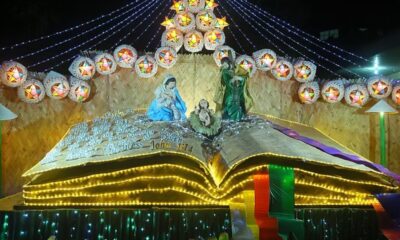
 TOPIC5 months ago
TOPIC5 months agoSymbols of Hope: The 15th Belenismo sa Tarlac
-

 TOPIC5 months ago
TOPIC5 months ago“The Journey Beyond Fashion” – Ditta Sandico
-
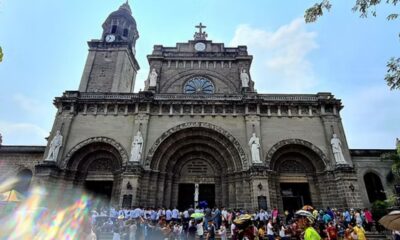
 NEWS5 months ago
NEWS5 months agoHistorical Churches in Manila
-

 TOPIC5 months ago
TOPIC5 months agoRIZAL at 160: a Filipino Feat in Britain
-
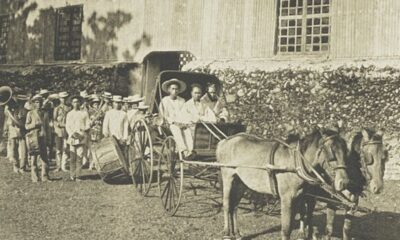
 TOPIC5 months ago
TOPIC5 months ago“Recuerdos de Filipinas – Felix Laureano”
-
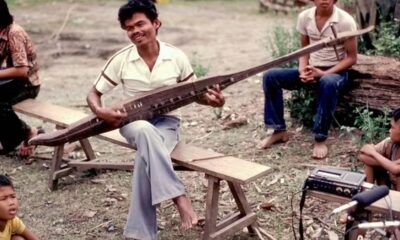
 TOPIC5 months ago
TOPIC5 months agoBoats with Two Strings
-
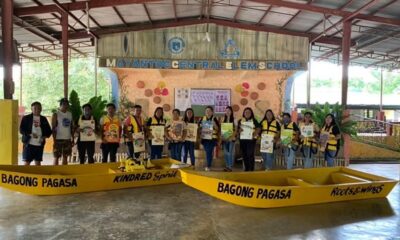
 TOPIC5 months ago
TOPIC5 months ago5 Must-Have Products From Adarna House to Nurture Your Roots
-

 TOPIC5 months ago
TOPIC5 months agoA Taste of Art, A Brush of Flavor: The Culinary and Creative Genius of Claude Tayag
